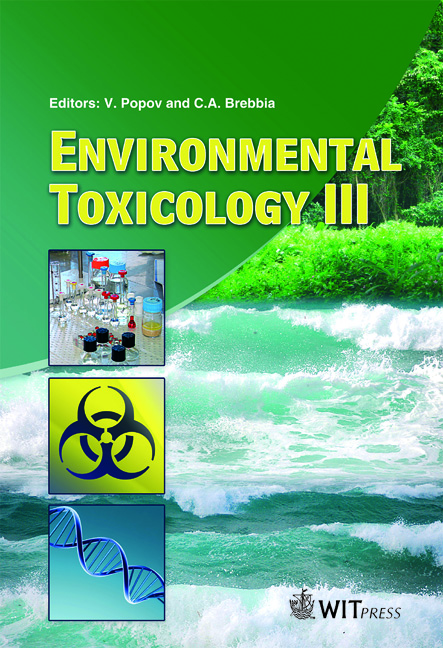Acute Toxicity Of Lead Nitrate To Red Swamp Crayfish, Procambarus Clarkii
Price
Free (open access)
Transaction
Volume
132
Pages
7
Page Range
101 - 107
Published
2010
Size
218 kb
Paper DOI
10.2495/ETOX100101
Copyright
WIT Press
Author(s)
A. Balarezo & P. B. Tchounwou
Abstract
Red crayfish, Procambarus clarkii, is widely farmed in the southern states of Louisiana and Texas. It is the most valuable of commercial crayfish species in the United States, where it is considered a delicacy. In recent years, its availability has decreased due to environmental contamination by toxic chemicals including lead. In the present study, we conducted a ninety-six-hour static renewal bioassay to assess the acute toxicity of lead as Pb(NO3)2 to adult red swamp crayfish. Study results indicated that Pb(NO3)2 is toxic to P. clarkii, and its toxicity is both time- and concentration-dependent. The 96-hr LC50 was computed to be 3.95 g/L. During experimentation, erratic behaviors such as restlessness, loss of balance, air gulping, and convulsion were observed in leadexposed crayfish. Findings from this study have provided a scientific basis for designing subsequent experiments to assess the chronic exposure and biomarkers of lead-induced toxicity in P. clarkii. Keywords: red swamp crayfish, lead nitrate, acute toxicity. 1 Introduction Lead (Pb) is a ubiquitous metal that exists in several oxidation states (0, I, II, and IV). However, Pb2+ is the most stable, available, and suspected of being accumulated by aquatic organisms. The overall concentration of Pb in the continental crust is estimated to be 20 ppm dry matter. It is number 35 most abundant element in nature. Background levels in the top soil vary between 10 to 70 ppm; levels in surface water are generally bellow 0.01 ppm, but levels up to 1ppm can be expected inn contaminated areas with soft waters; in ocean water
Keywords
red swamp crayfish, lead nitrate, acute toxicity





